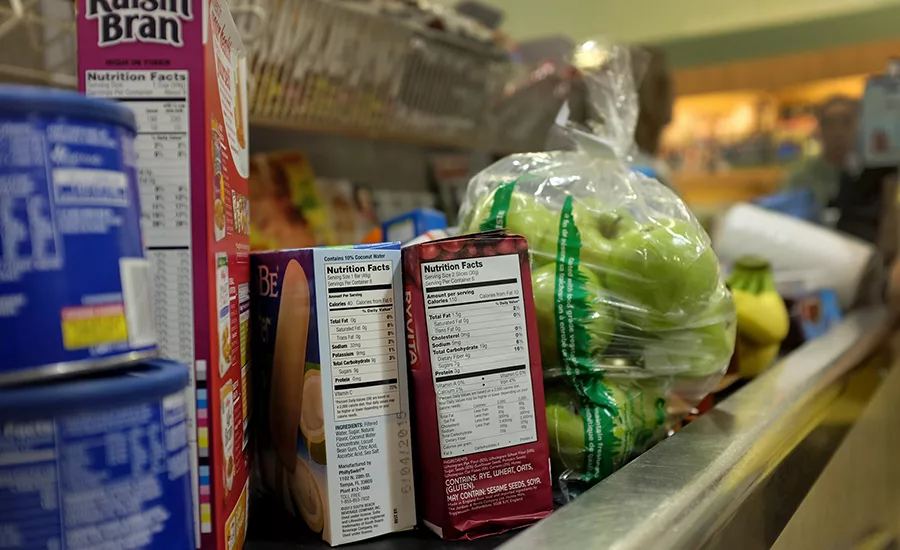Food Giant 'Expedites' Quality Control Upgrade
New labeling equipment and connecting to its SCADA platform add critical data monitoring to packaging lines, avoiding recalls and reputational harm.

A large U.S food manufacturer invested in a label verification system that increases automatic identification of barcodes, defect detection, code dates and SKU management. Image courtesy of Creative Commons
In a FOOD ENGINEERING interview, a PMMI VP said that three-quarters of food manufacturers were expected to spend money on new equipment from 2020-2025. PMMI’s Jorge Izquierdo, VP of market development at PMMI, said the driver behind the increase in processing and packaging purchases was “to leverage new technologies that offer increased flexibility.”
Increased flexibility can mean a lot of things in the food manufacturing segment. Flexibility with food operations can lead to remote monitoring, quicker access to plant floor data, improved quality control and reduced production line complexity with automation.
A large U.S. food manufacturer recently set sights on new labeling equipment and connecting to the company’s SCADA platform. Combining these two elements would add critical data monitoring to packaging lines, avoiding recalls and reputational harm.
In 2020, 35% of all FDA recalls were due to undeclared allergens and mislabeled packaging; the sources of error were vendors, operators and material handling, and line clearance procedures.
Besides recalls, the equipment upgrade and SCADA integration would optimize operator decision-making and reduce waste for the entire company.
Grantek, a system integrator, met with the company’s senior management at the corporate and site levels, and recommended a label verification solution. The company cited specific needs in the discovery and assessment phase by Grantek. Grantek also offers an overall equipment effectiveness (OEE) accelerator tool to benchmark, track and improve metrics.
Grantech recommended a Cognex Vision machine vision system while leveraging Inductive Automations’ Ignition SCADA platform. The Ignition SCADA platform allowed the food manufacturer to insert more data tags to the labeling section on the packaging line. It offers unlimited licensing and can help scale reporting with its SQL Bridge Module, which integrates PLCs and SQL databases.
Label Verification Challenges with Increasing SKUs
Being able to scale and monitor more labeling components was vital with this project. As with most food and consumer companies, SKUs are multiplying, and quality teams need more granularity due to pack size changes.
Below is the complete solution label verification components:
- Label Verification
- Code Date Inspection
- Defect Detection
- Customization
- SKU Management
Before implementing the new solution, operators would manually set code dates and label types. These disparate systems weren’t integrated, and operators interpreted instructions from these unconnected systems, leading to verification issues.
 With a scalable SCADA system in place, the food giant can add more data monitoring and automate data transfer to other business and production systems. Image courtesy of Grantek
With a scalable SCADA system in place, the food giant can add more data monitoring and automate data transfer to other business and production systems. Image courtesy of Grantek
For the quality staff, this process would cause lengthy delays in production with manual errors and open up the company to mislabeled packaging. The solution confirms packaging materials against the quality specifications and bill of materials (BOM) in the enterprise resource planning (ERP) system.
For the actual installation, Grantek didn’t increase the footprint by adding a new conveyor, but instead mounted the label verification system over the line. The new automated solution uses real-time live images to automate inspection of product labels and packaging by capturing barcodes—1D, 2D, UPC or Data Matrix—and code date inspection. The code date inspection provides a full packaging validation.
Also included was SKU management, which integrates with other business and production systems to provide SKU lists and BOM’s automatic SKU selection/line changeover. The SKU management system can also integrate with web-based SKU management and local changeover systems, if needed.
Web-based HMIs and dashboards are also possible via the food manufacturer’s SCADA system and perspective module. The perspective module uses CSS and is similar to web-page development, versus SCADA. However, the data tag structure, scripting engine and the rest of the SCADA application remain the same.
Finally, the label inspection system includes defect detection and this integrates with the cameras that can spotlight over/underwrap, carton counting in bundles, or improper/damaged packaging.
While the food company didn’t provide specifics on return-on-investment metrics, Grantek believes that the reduction of downtime, scrap, waste and brand reputation drove this system upgrade.
Looking for a reprint of this article?
From high-res PDFs to custom plaques, order your copy today!







